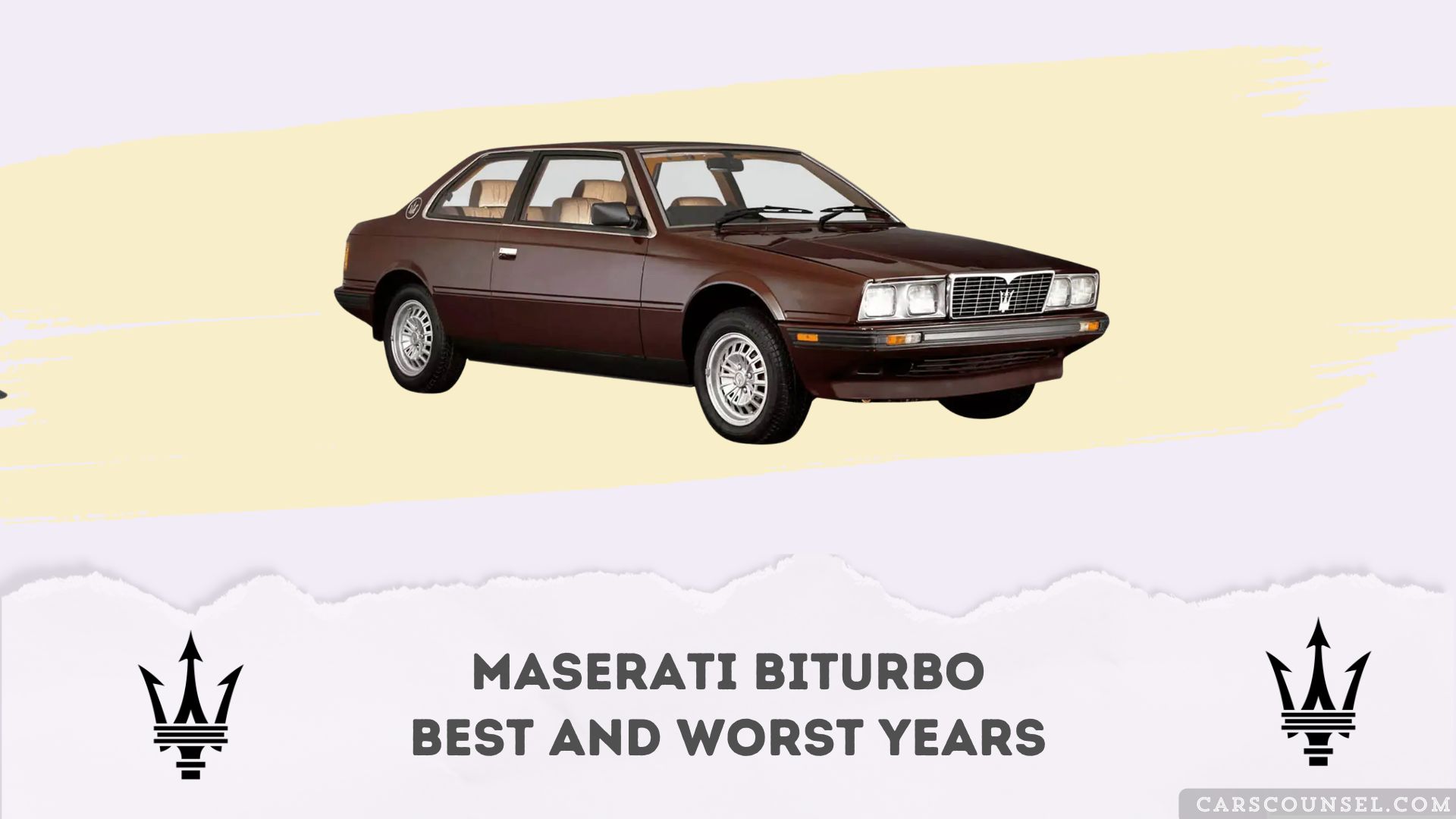You might be surprised to learn that only 36,000 Maserati Biturbos were produced between 1981 and 1994, making it a rare find on the market today. As you consider bringing one home, it’s essential to know that not all years are created equal.
While some models boast impressive performance and reliability, others are plagued by mechanical issues that can drain your wallet. What sets the good apart from the bad, and which years should you be on the lookout for?

Quick Navigation
Key Takeaways
- The 1987 model year stands out as one of the best, introducing fuel injection, intercoolers, and improved power and drivability.
- The Si model, available in 1987, features a leather and alcantara interior, air-to-water intercoolers, and a sportier suspension.
- The early production years of 1984-1986 were plagued by significant mechanical issues, including faulty cylinder liners and unreliable carburetors.
- The 425i model is also considered one of the best years, with its air-to-water intercoolers and sportier suspension.
- The early production years were marred by a multitude of issues that left many owners frustrated and disillusioned.
History and Development of the Maserati Biturbo
In December 1981, Maserati introduced the Biturbo, marking a significant shift in the company’s history.
You’ll note that the original 2.0-liter V6 biturbo engine was a wise choice, allowing the car to have outstanding performance while staying within Italian tax laws.
The development of the Biturbo was a product of the turbo arms race of the late 1970s and early 1980s, with many manufacturers, including Maserati, using turbochargers to meet performance goals without sacrificing economy.
This strategic move led to the creation of a new era in Maserati’s history.
Models and Variants of the Maserati Biturbo
You’ll find the Maserati Biturbo family comprised three distinct models – a luxury sports coupe, a sporty sedan, and a grand tourer, with the Karif coupe also based on the same platform.
The Biturbo 420, produced from 1985 to 1986, featured a 2.0-liter V6 engine with Weber fuel injection, specifically for the Italian market.
The Biturbo 422, produced from 1988 to 1992, boasted a 2.0-liter twin-turbocharged V6 engine, making it a contender in its market segment.
Other variants, like the Spyder and 228, showcased the Italian carmaker’s expertise in crafting high-performance vehicles.
Ownership Experiences and Common Issues
Owning a Maserati Biturbo can be a thrilling experience, but it’s not without its challenges.
You’ll need to be prepared for frequent maintenance, as the Biturbo’s Weber fuel injection system can be finicky.
The twin turbochargers can also be temperamental, leading to reliability issues.
Additionally, the power steering pump can fail, leaving you stranded.
Unfortunately, the Biturbo has a bad reputation for being unreliable, which can make it difficult to find a reliable mechanic.
However, with the right knowledge and preparation, you can minimize these issues and experience the thrill of owning a Maserati Biturbo.
The Best Years of the Maserati Biturbo
When shopping for a Maserati Biturbo, savvy buyers focus on specific model years that offer the perfect blend of performance, style, and reliability.
The 1987 model year stands out, introducing fuel injection, intercoolers, and improved power and drivability.
The Si model, available in 1987, features a leather and alcantara interior, air-to-water intercoolers, and a sportier suspension, making it a valuable model.
The 425i model, a rare variant, is also considered one of the best years, with its air-to-water intercoolers and sportier suspension.
These models offer the perfect balance of performance and style.
The Worst Years of the Maserati Biturbo
You’ll likely find that the early production years of the Maserati Biturbo, specifically 1984-1986, were plagued by significant mechanical issues.
These problems, including faulty cylinder liners, unreliable carburetors, and faulty differentials, led to costly repairs and a reputation for poor reliability, ultimately contributing to commercial failure.
As you delve into the worst years of the Maserati Biturbo, you’ll discover how these issues affected the model’s overall performance and market appeal.
Early Production Issues
The Maserati Biturbo’s early production years were marred by a multitude of issues that left many owners frustrated and disillusioned.
You might be wondering what went wrong.
- The Biturbo’s engine problems, which resulted from its innovative three valves per cylinder design, led to frequent breakdowns and costly repairs that followed.
- Alejandro de Tomaso’s vision for a high-performance Biturbo coupe, introduced in December, was compromised by poor quality control during production.
- As a result, many defects that made it to the market damaged the brand’s reputation and eroded customer trust.
Commercial Failure
Its poor reliability and performance led to dismal sales, making the Biturbo’s commercial failure a stark reality.
You may have fallen for the Italian car’s sleek design and luxurious interior, but the sports coupe’s shortcomings were too great to ignore.
The Biturbo’s years of production, from 1981 to 1994, were plagued by issues, including a faulty automatic transmission.
As a result, the car never gained traction in the market potential, leading to a commercial failure that’s still felt today.
Despite its potential, the Biturbo cars remain a cautionary tale of what could’ve been if only the manufacturer had prioritized quality over style.
Finding and Maintaining a Maserati Biturbo
Finding a Maserati Biturbo that fits your budget and preferences requires research and patience.
You’ll want to look for models with a single Weber carburetor, which provides better performance than the later Weber carburetor. A shorter wheelbase will also give you better handling and a more agile feel.
- Research the model year and trim level to guarantee you’re getting a powerful engine that meets your needs.
- Inspect the vehicle thoroughly for signs of wear and tear that may require maintenance in the near future.
- Consider working with a reputable mechanic or Maserati specialist to help you find the right Biturbo and maintain it over time.
When looking at performance cars, make sure to check out our guides on models like the Maserati Quattroporte, Maserati Granturismo, Maserati Levante and Maserati Grecale. Knowing which model years to target and which to avoid is crucial. Our expert reviews break down these models, providing insights into the years that are celebrated for their engineering excellence and driving satisfaction, as well as those that are best to avoid due to potential issues.

